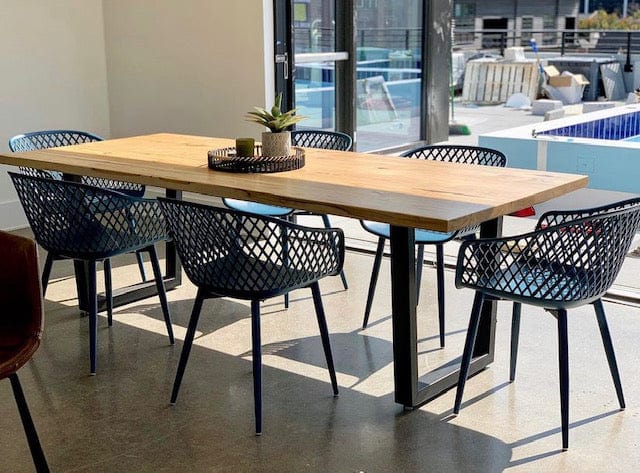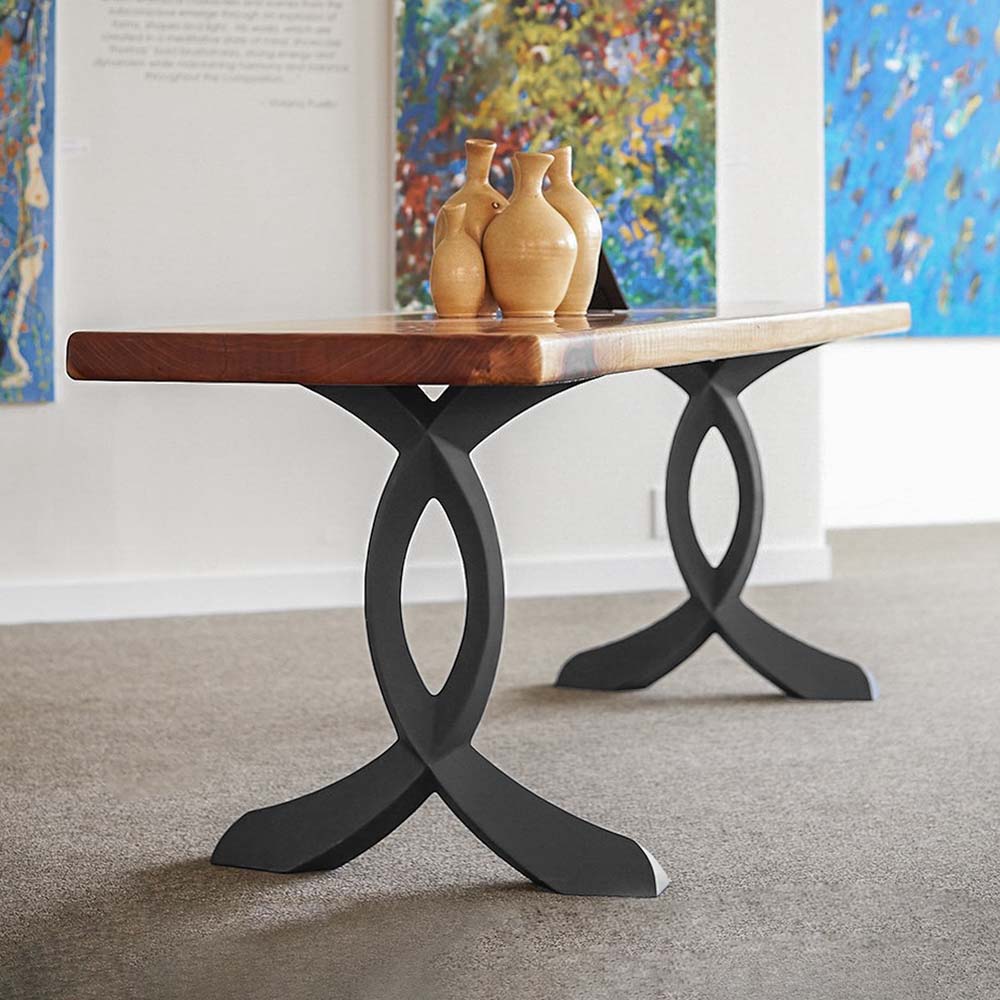Just how to Pick the Perfect Dining Room Table Legs for Your Home Style
Just how to Pick the Perfect Dining Room Table Legs for Your Home Style
Blog Article
Selecting the Perfect Table: What Styles Work Best for Your Home?
Choosing the suitable eating table for your home can be a nuanced process that balances looks and capability. To browse these selections properly and discover a table that really complements your home, consider the complying with facets in information.
Analyzing Your Space
Reviewing the dimensions and format of your eating area is a critical very first action in choosing the best table. Begin by measuring the size and size of the area, representing doorways, windows, and other architectural functions that can affect table positioning. This ensures that your table not only fits yet likewise permits comfortable motion around it.
Think about the variety of people you generally amuse. A table ought to fit your household's daily demands while using enough versatility for periodic visitors. Generally of thumb, allocate a minimum of 24 inches of table width per individual to ensure a comfortable dining experience.
It's additionally necessary to maintain ideal clearance around the table. Ideally, there should be at least 36 inches in between the table side and walls or other furniture, making it possible for very easy accessibility and movement. For areas where chairs with arms or added storage space devices like buffets are involved, increasing this clearance to 48 inches is suggested.
Lighting and ambience play considerable functions too. Guarantee that your eating table straightens with existing illumination components or plan for sufficient lighting services. This comprehensive spatial evaluation assurances that your dining table not just fits literally yet likewise balances with your area's total functionality and visual.
Popular Table Styles

Traditional table frequently include elaborate information, rounded legs, and rich timber finishes, evoking a sense of classic elegance. They are ideal for homes with traditional decoration or those seeking to include a touch of sophistication to their dining location.
Modern eating tables prioritize simplicity and tidy lines, frequently including materials like glass and steel. These tables are perfect for contemporary rooms, providing a sleek and minimalist appearance that enhances minimalist layout philosophies.
Rustic dining tables, on the other hand, highlight natural products and a handmade appearance - dining room table legs. They commonly include reclaimed wood and a distressed surface, creating a cozy and inviting environment. These tables work well in farmhouse-style homes or those seeking a relaxing, natural feeling
Industrial eating tables integrate basic materials such as steel and wood, usually showcasing an utilitarian aesthetic. This design is well-suited for loft spaces or metropolitan rooms, including a touch of rugged appeal and durability to the dining experience.
Each style offers unique benefits, making it important to select one that aligns with your home's total style and your individual preferences.
Material Selections
When selecting an eating table, the option of material plays a vital function in identifying both the table's aesthetics and performance. Wood, metal, glass, and composite materials each offer unique advantages and obstacles, making it imperative to straighten the product with your home's decoration and way of life demands.
Wood is a timeless and functional choice, available in varieties such as oak, walnut, and mahogany. Understood for its resilience and heat, timber matches both conventional and modern interiors. It calls for routine maintenance to protect against scratches and warping.
Metal tables, typically crafted from stainless steel, aluminum, or functioned iron, are commended for their contemporary charm and effectiveness. They are especially matched for commercial or minimal setups however can be vulnerable to damages and might feel cool to the touch.
Glass table bring an air of elegance and openness, suitable for smaller sized areas as they develop an illusion of even more area. While simple to tidy, glass can be vulnerable to spots and requires careful managing to prevent chips and cracks.
Composite materials, such as MDF and plywood, offer cost-efficient and adjustable options, though they may lack the long life of natural products. Choosing the ideal product ensures your dining table is both a useful property and an aesthetic joy.
Forming and Size Considerations
After figuring out the ideal product for your table, the following factor to consider is selecting the appropriate sizes and shape to match your room. The form of the table significantly affects the room's visual and capability. Rectangular tables, the most typical shape, are perfect for larger areas and can suit a greater variety of guests. They additionally enable a much more formal dining experience. Alternatively, round tables cultivate a feeling of affection and are outstanding for smaller eating locations, motivating conversation by removing corners and making everybody really feel similarly included.
As a guideline of thumb, designate at the very least 24 inches of table their website size per person to ensure comfy eating. Furthermore, consider the table's clearance area: there should be at least 36 inches in between the table edge and the wall surfaces or various other furniture. Extending tables use flexibility if you often hold larger celebrations, giving additional seating when required without occupying additional room daily.
Matching Your Design
Selecting a table that harmonizes with your existing style is pivotal in producing a cohesive and welcoming room. Begin by evaluating your present interior decoration style, whether it be modern, traditional, rustic, or eclectic. The eating table need to complement the overall visual, not take on it. For circumstances, a streamlined, minimalist table with clean lines is suitable for a modern home, while a vintage, this post luxuriant table matches a much more conventional setup.
Shade and material are similarly considerable. If your decor includes cozy tones and natural materials, consider a wood table to boost the organic feeling. On the other hand, a glass or steel table might be better suited in a room controlled by trendy shades and industrial aspects. Focus on the finish, as it should mirror other furniture and components to preserve consistency.
Structure plays a crucial duty too. A rough-hewn, recovered wood table can include character to a rustic space, while a polished marble surface can elevate a lavish eating location. Lastly, think about the range and proportion of the table in connection to the area size and existing furniture. A well-matched dining table not just improves aesthetic charm however additionally improves the general dining experience.

Verdict
Selecting the perfect table necessitates cautious factor to consider of area, design, products, form, and size (dining room table legs). Standard tables complement classic insides with abundant wood surfaces, while contemporary tables fit contemporary settings via glass and metal. Rustic designs introduce warmth using all-natural products, and industrial designs improve urban settings with raw aspects. Bonuses Balancing the eating table with existing design makes sure both functionality and visual charm, adding to a natural and cosmetically pleasing eating area.
Report this page